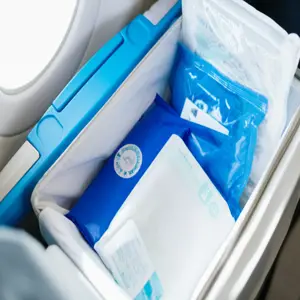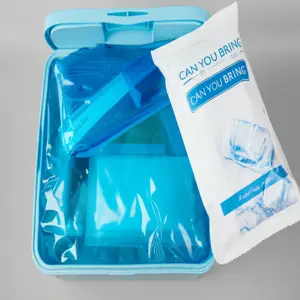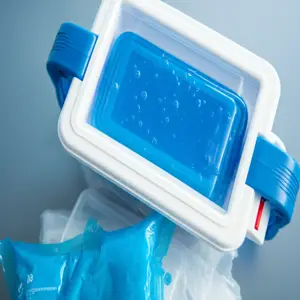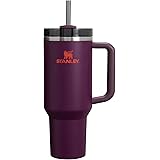Planning a trip and wondering whether you can bring that ice pack to keep your food fresh or your medication chilled? Navigating airport security can be tricky, and understanding the Transportation Security Administration (TSA) regulations regarding ice packs is crucial for a smooth travel experience. In 2025, the rules remain relatively consistent, but it’s essential to stay informed about any updates or specific circumstances that might affect your ability to bring ice packs on board.
This comprehensive guide will provide you with everything you need to know, from the basic TSA guidelines to practical tips and frequently asked questions.
Table of Contents
Understanding the Basics: Ice Packs and TSA Regulations
The TSA’s primary concern is the safety and security of passengers. As such, they have established rules regarding liquids, gels, and aerosols, which directly impact the carriage of ice packs. While ice packs are generally permitted, there are specific rules that need to be followed to avoid delays or confiscation at security checkpoints. Let’s break down the general rules and then delve into specifics.
General Rule: Solid vs. Liquid/Gel
The key determinant of whether your ice pack is allowed is its state. If the ice pack is completely solid (frozen solid), it is generally permissible in both carry-on and checked baggage. However, if the ice pack is partially melted and contains liquid or gel, it becomes subject to the TSA’s 3-1-1 liquids rule for carry-on baggage.
The 3-1-1 Liquids Rule for Carry-On Baggage
The 3-1-1 liquids rule is a cornerstone of TSA regulations. It stipulates that any liquid, gel, aerosol, cream, or paste must be in a container that is 3.4 ounces (100 milliliters) or less. These containers must then be placed in a single, quart-sized, clear plastic zip-top bag. Each passenger is limited to one such bag.
So, if your ice pack has partially melted, and the liquid inside exceeds 3.4 ounces, it will likely be confiscated unless you can demonstrate that it is medically necessary (more on that later).

frozen gel packs
Checked Baggage
The good news is that the restrictions on ice packs are generally more relaxed for checked baggage. You can usually pack larger, partially melted ice packs in your checked luggage without violating TSA regulations. However, it’s still a good idea to ensure that the ice pack is properly sealed to prevent leakage that could damage your belongings or other passengers’ luggage. Some airlines may also have their own restrictions, so checking with your airline is always a good idea.
Types of Ice Packs and Their Acceptability
Not all ice packs are created equal, and the TSA treats different types of ice packs slightly differently. Here’s a breakdown:
Gel Ice Packs
These are the most common type of ice pack. As discussed above, if they are fully frozen, they’re generally allowed. If they contain liquid or gel and exceed 3.4 ounces in your carry-on, they’re subject to the 3-1-1 rule. Always ensure they are in a clear, zip-top bag if they aren’t fully frozen.
Water Ice Packs
Similar to gel ice packs, water ice packs are permissible when fully frozen. If they melt and contain liquid exceeding 3.4 ounces, the same rules apply. Consider double-bagging these to minimize the risk of leakage.
Chemical Ice Packs
Chemical ice packs, like instant cold packs, can be a bit more complicated. Some contain chemicals that might be flagged by TSA agents. While generally allowed, it’s a good idea to keep the packaging intact and be prepared to explain their purpose. If you’re unsure, it’s best to check the manufacturer’s website or contact the TSA directly.
Dry Ice
Dry ice is a completely different category. The TSA does allow dry ice in both carry-on and checked baggage, but there are strict limitations. Specifically, it must be properly packaged to allow the release of carbon dioxide gas. The maximum amount allowed is 5.5 pounds (2.5 kg) per passenger. It’s also important to declare that you are carrying dry ice to the airline. Many airlines also require specific packaging guidelines, so checking with your airline before arriving at the airport is paramount. Improperly packaged dry ice can be a safety hazard due to the build-up of pressure.
Table: Ice Pack Types and TSA Regulations
| Ice Pack Type | Carry-On (Fully Frozen) | Carry-On (Partially Melted) | Checked Baggage | Notes |
|---|---|---|---|---|
| Gel Ice Packs | Allowed | Subject to 3-1-1 rule if > 3.4 oz | Allowed | Ensure proper sealing to prevent leakage. |
| Water Ice Packs | Allowed | Subject to 3-1-1 rule if > 3.4 oz | Allowed | Double-bag for extra protection. |
| Chemical Ice Packs | Generally Allowed | Subject to 3-1-1 rule if applicable. | Allowed | Keep packaging intact. Be prepared to explain. |
| Dry Ice | Allowed (up to 5.5 lbs) | N/A | Allowed (up to 5.5 lbs) | Must be properly packaged and declared to the airline. Check airline-specific regulations. |
Specific Scenarios: Medical and Food-Related Ice Packs
The TSA recognizes that some individuals require ice packs for medical reasons or to preserve perishable food items. In these cases, there are accommodations that can be made.
Read More: Bringing Toothpaste In Checked Luggage: Travel Guidelines
Medical Ice Packs
If you require an ice pack to keep medication cold, the TSA is generally more lenient. You are allowed to bring medically necessary ice packs or frozen gel packs in reasonable quantities, even if they are partially melted or exceed the 3.4-ounce limit. However, you must declare these items to the TSA officer at the security checkpoint. It’s helpful to have a prescription or doctor’s note readily available to explain the medical necessity. The TSA may subject these items to additional screening, but they will generally be allowed if deemed necessary.
Example: Imagine you have insulin that needs to be kept cool. You have several ice packs to maintain the temperature. Present your prescription and explain your need to the TSA agent. They may test the ice packs or the insulin itself for explosives, but as long as everything checks out, you should be good to go.
Food-Related Ice Packs
If you’re bringing food that needs to be kept cold, such as breast milk, baby formula, or perishable snacks, the same rules apply as with medical ice packs. You can bring ice packs to keep these items cold, even if they exceed the 3.4-ounce limit. Again, declare these items to the TSA officer and be prepared for additional screening. It’s also a good idea to pack these items in a separate bag or container to facilitate the screening process.
Statistical Data: According to recent TSA blog posts and media briefings, there has been an increase in passengers traveling with medically necessary items. The TSA has reiterated its commitment to accommodating these needs while maintaining security protocols. While specific numbers are not publicly available, the emphasis on communication and preparedness highlights the importance of understanding the rules surrounding medical and food-related items.
Navigating Airport Security with Ice Packs: Practical Tips
Here are some practical tips to help you navigate airport security smoothly when traveling with ice packs:
- Freeze Ice Packs Solid: Whenever possible, freeze your ice packs completely solid before traveling. This minimizes the risk of them being subject to the 3-1-1 rule.
- Pack Strategically: Pack your ice packs in an easily accessible location in your carry-on bag. This will make it easier for TSA officers to inspect them if needed. Consider using a clear, zip-top bag even if they are frozen.
- Declare at the Security Checkpoint: Always declare your ice packs to the TSA officer when you reach the security checkpoint. This will prevent any surprises and allow them to conduct the necessary screening procedures.
- Provide Documentation: If your ice packs are medically necessary, have a prescription or doctor’s note readily available. This will help expedite the screening process.
- Use TSA PreCheck or Global Entry: If you are a frequent traveler, consider enrolling in TSA PreCheck or Global Entry. These programs can expedite the security screening process and may reduce the likelihood of encountering issues with your ice packs.
- Consider Alternative Cooling Methods: If possible, explore alternative cooling methods, such as frozen water bottles or commercially available insulated containers, which may be less prone to scrutiny.
- Check Airline Regulations: Always check your airline’s specific regulations regarding ice packs and other potentially restricted items. Some airlines may have stricter rules than the TSA.
- Be Prepared for Additional Screening: Understand that your ice packs may be subject to additional screening, such as explosive trace detection. Be patient and cooperative with TSA officers.
- Contact TSA in Advance: If you have any concerns or questions, you can contact the TSA Contact Center or use the “Ask TSA” feature on Twitter or Facebook.
- Monitor TSA Updates: Stay informed about any changes to TSA regulations by checking the TSA website or following their social media channels.
Real-World Examples and Scenarios
Let’s consider a few real-world scenarios to illustrate how these rules apply:
- Scenario 1: Traveling with Insulin: A passenger needs to travel with insulin that must be kept refrigerated. They pack several gel ice packs to maintain the temperature. They have a prescription for the insulin. At the security checkpoint, they declare the ice packs and the insulin. The TSA officer asks to see the prescription and conducts a brief inspection of the items. After confirming the medical necessity, the passenger is allowed to proceed with the ice packs, even though some may be partially melted.
- Scenario 2: Bringing Breast Milk: A mother is traveling with breast milk for her infant. She packs several frozen ice packs to keep the breast milk cold. At the security checkpoint, she declares the ice packs and the breast milk. The TSA officer may ask her to open the container of breast milk for testing. Once the testing is complete, she is allowed to proceed with the ice packs and breast milk.
- Scenario 3: Transporting Perishable Food: A passenger is bringing perishable snacks to a destination. They pack gel ice packs in their carry-on bag to keep the snacks cold. However, the ice packs are not fully frozen and contain liquid exceeding 3.4 ounces. Because they do not have a medical necessity or a valid reason for the ice packs, the TSA officer confiscates them.
- Scenario 4: Dry Ice Mishap: A passenger attempts to transport dry ice in a sealed container in their checked baggage without declaring it to the airline. During the flight, the container bursts due to the buildup of carbon dioxide gas, causing damage to the surrounding luggage. The airline investigates the incident and fines the passenger for violating regulations.
Potential Issues and How to Avoid Them
Even with careful planning, you may encounter issues when traveling with ice packs. Here are some common problems and how to avoid them:
- Ice Packs Melting: To prevent ice packs from melting, use high-quality insulated containers and pack them tightly with the items you need to keep cold. Consider using multiple ice packs to prolong the cooling effect. You can also pre-chill your items in the refrigerator or freezer before packing them.
- TSA Misunderstandings: Sometimes, TSA officers may misinterpret the regulations or be unfamiliar with specific circumstances. In such cases, remain calm and politely explain your situation. Provide any necessary documentation and ask to speak to a supervisor if necessary. Remember that TSA officers are doing their job to ensure the safety of all passengers.
- Airline Restrictions: Always check with your airline about any specific restrictions they may have regarding ice packs or other potentially restricted items. Some airlines may have stricter rules than the TSA. This is especially true for international flights where regulations can vary greatly.
- Damaged Ice Packs: Inspect your ice packs before traveling to ensure they are in good condition and not leaking. Replace any damaged ice packs to prevent messes and potential issues with TSA.
- Time Constraints: Allow ample time for security screening, especially if you are traveling with medically necessary items or perishable food. This will reduce stress and prevent you from missing your flight.
Staying Up-to-Date with TSA Regulations
TSA regulations can change, so it’s essential to stay informed. Here are some ways to keep up-to-date:
- TSA Website: Visit the TSA website regularly for the latest information on permitted and prohibited items. The TSA website has a dedicated section on traveling with liquids, medications, and food.
- TSA Social Media: Follow the TSA on social media platforms like Twitter and Facebook for real-time updates and travel tips.
- TSA Contact Center: Contact the TSA Contact Center by phone or email for specific questions or concerns.
- “Ask TSA” Feature: Use the “Ask TSA” feature on Twitter or Facebook to get quick answers to your travel-related questions.
- Travel Blogs and Forums: Read travel blogs and forums for insights from other travelers who have experience traveling with ice packs.
Current Trends in Travel and Ice Pack Usage
Several trends are influencing how people travel with ice packs in 2025:
- Increased Awareness of Food Safety: With growing awareness of food safety and the importance of maintaining proper temperatures, more travelers are choosing to bring their own food and ice packs.
- Rise in Medical Tourism: As medical tourism becomes more popular, more people are traveling with medications that require refrigeration, leading to an increased need for ice packs.
- Focus on Sustainable Travel: Many travelers are looking for eco-friendly alternatives to traditional ice packs, such as reusable gel packs or frozen water bottles.
- Technological Advancements in Cooling: Innovations in cooling technology, such as portable refrigerators and temperature-controlled containers, are providing travelers with more options for keeping items cold.
- Increased Demand for Transparency: Travelers are demanding more transparency from airlines and security agencies regarding regulations and procedures.
Alternatives to Traditional Ice Packs
If you’re looking for alternatives to traditional ice packs, here are a few options to consider:
- Frozen Water Bottles: Frozen water bottles can serve as ice packs and provide you with drinking water once they thaw. They are also less likely to be scrutinized by TSA officers.
- Reusable Gel Packs: Reusable gel packs are a more sustainable option than disposable ice packs. They are also less likely to leak.
- Insulated Containers: High-quality insulated containers can keep items cold for extended periods without the need for ice packs.
- Portable Refrigerators: Portable refrigerators are a more expensive option, but they provide superior cooling performance and are ideal for travelers who need to keep items cold for long durations.
- Phase Change Material (PCM) Coolers: PCM coolers use specialized materials that absorb and release heat, providing a more consistent and longer-lasting cooling effect than traditional ice packs.
The Impact of Global Events on Travel Regulations
Global events, such as pandemics or security threats, can significantly impact travel regulations, including those related to ice packs. During such times, security measures may be heightened, and restrictions on liquids and gels may be tightened. It’s crucial to stay informed about any travel advisories or specific regulations issued by the TSA or your airline. Be prepared for longer security screening times and the possibility of additional scrutiny of your belongings.
Documenting Your Experience: What to Do If You Encounter Issues
If you encounter any issues while traveling with ice packs, it’s essential to document your experience. Take photos or videos of the incident, if possible, and note the date, time, and location. Obtain the names of any TSA officers or airline personnel involved. File a complaint with the TSA or your airline if you believe you were treated unfairly or that your rights were violated. Sharing your experience online can also help raise awareness and prevent similar incidents from happening to others.
Future Trends in TSA Regulations
It’s difficult to predict the future with certainty, but several trends suggest potential changes in TSA regulations regarding ice packs:
- Enhanced Screening Technologies: The TSA is continuously developing and deploying new screening technologies that can detect explosives and other threats more efficiently. These technologies may eventually reduce the need for strict restrictions on liquids and gels.
- Risk-Based Security: The TSA is increasingly adopting a risk-based security approach, which focuses on identifying and mitigating the highest-risk threats. This may lead to more targeted screening procedures and less stringent regulations for low-risk passengers.
- Collaboration with Industry Partners: The TSA is working more closely with airlines, airports, and other industry partners to improve security and streamline the travel experience. This collaboration may result in more consistent and harmonized regulations.
- Emphasis on Education and Communication: The TSA is placing greater emphasis on educating passengers about security regulations and providing clear and accurate information. This may help reduce confusion and prevent misunderstandings.
Ice Packs and International Travel
When traveling internationally, it’s important to be aware that regulations regarding ice packs may vary from country to country. Some countries may have stricter rules than the United States, while others may be more lenient. It’s always a good idea to check the regulations of your destination country before traveling. You can typically find this information on the website of the country’s embassy or consulate. Also, be mindful of cultural differences and be prepared to explain the purpose of your ice packs to security personnel. International travel requires diligent preparation, so don’t hesitate to research specific regulations well in advance of your trip.
Beyond the Basics: Advanced Tips for Traveling with Ice Packs
For seasoned travelers or those with unique needs, here are some advanced tips for traveling with ice packs:
- Use a Vacuum Sealer: If you’re transporting perishable food items, consider using a vacuum sealer to remove air and extend their shelf life. This can also help prevent leakage and maintain the cold temperature.
- Consider Gel Bead Ice Packs: Gel bead ice packs are highly flexible and conform to the shape of the items you’re trying to keep cold. They are also less likely to leak than traditional gel packs.
- Pre-Cool Your Cooler: Before packing your cooler with ice packs and food, pre-cool it in the refrigerator or freezer for several hours. This will help maintain the cold temperature for a longer period.
- Use a Temperature Logger: If you need to ensure that your items remain within a specific temperature range, consider using a temperature logger. This device will record the temperature over time and provide you with a detailed report.
- Ship Perishable Items Ahead of Time: If you’re traveling with a large quantity of perishable items, consider shipping them to your destination ahead of time. This can save you the hassle of carrying them on the plane and reduce the risk of encountering issues with TSA.
Common Misconceptions About Traveling with Ice Packs
There are several common misconceptions about traveling with ice packs that can lead to confusion and frustration. Let’s debunk some of these myths:
- Myth: All ice packs are prohibited in carry-on baggage.
Fact: Fully frozen ice packs are generally allowed in carry-on baggage.
- Myth: You can bring any amount of liquid in your carry-on bag as long as it’s frozen.
Fact: Only fully frozen liquids are allowed. Partially melted liquids are subject to the 3-1-1 rule.
- Myth: TSA agents always know the rules and regulations.
Fact: While TSA agents are trained, they may sometimes misinterpret the rules or be unfamiliar with specific circumstances. It’s important to be prepared and advocate for yourself.
- Myth: A doctor’s note guarantees that you can bring any item on a plane.
Fact: A doctor’s note can help, but TSA officers still have the final say. They may subject medically necessary items to additional screening.
- Myth: You can’t bring breast milk on a plane.
Fact: Breast milk is allowed in reasonable quantities, even if it exceeds the 3-1-1 limit. However, you must declare it to the TSA officer.
Read More: Portable Phone Charger on a Plane: A Traveler’s Guide
Ethical Considerations When Traveling with Ice Packs
When traveling with ice packs, it’s important to consider the ethical implications of your actions. Here are some ethical considerations to keep in mind:
- Environmental Impact: Choose eco-friendly ice pack options and dispose of them responsibly. Consider the environmental impact of your travel choices and opt for sustainable alternatives whenever possible.
- Respect for Security Personnel: Treat TSA officers and airline personnel with respect and courtesy. Remember that they are doing their job to ensure the safety of all passengers.
- Honesty and Transparency: Be honest and transparent about the contents of your bags and the purpose of your ice packs. Avoid trying to conceal or misrepresent any items.
- Consideration for Other Passengers: Be mindful of other passengers and avoid causing inconvenience or discomfort. Pack your ice packs securely to prevent leakage and dispose of them properly after use.
- Adherence to Regulations: Follow all TSA regulations and airline policies. Ignoring or violating these rules can have serious consequences.
Resources for Travelers with Special Needs
If you have special needs or require accommodations when traveling with ice packs, here are some resources that can help:

TSA compliant ice packs
- TSA Cares: TSA Cares is a helpline that provides assistance to travelers with disabilities and medical conditions. You can contact TSA Cares to request assistance with security screening.
- Disability Rights Education & Defense Fund (DREDF): DREDF is a non-profit organization that provides legal advocacy and support for people with disabilities.
- National Disability Rights Network (NDRN): NDRN is a network of protection and advocacy agencies that provide legal representation and advocacy services to people with disabilities.
- Airline Disability Resources: Most airlines have dedicated resources for passengers with disabilities. Contact your airline to request accommodations or assistance.
- Travel Agents Specializing in Disability Travel: There are travel agents who specialize in assisting travelers with disabilities. They can help you plan your trip and navigate any challenges you may encounter.
The Psychology of Travel and Security
Understanding the psychology behind travel and security can help you better navigate airport security and minimize stress. Security measures are designed to deter potential threats and reassure passengers. However, they can also be perceived as intrusive and inconvenient. It’s important to remember that TSA officers are trying to protect everyone, and their actions are often based on protocols and procedures. By understanding the rationale behind security measures, you can approach the process with a more positive attitude and reduce anxiety. Be patient, cooperative, and respectful, and remember that everyone is working towards the same goal: a safe and secure travel experience.
The Role of Technology in Improving Travel Security
Technology is playing an increasingly important role in improving travel security. Advanced imaging technologies, such as millimeter wave scanners and computed tomography (CT) scanners, can detect hidden threats more effectively. Biometric technologies, such as facial recognition and fingerprint scanning, can verify passenger identities more accurately. Data analytics and artificial intelligence can identify patterns and anomalies that may indicate potential security risks. As technology continues to evolve, it will likely play an even greater role in enhancing travel security and streamlining the screening process. Staying informed about these technological advancements can help you better understand the future of air travel.

traveling with ice packs
Future of Air Travel and Security
The future of air travel and security is likely to be characterized by greater automation, increased use of technology, and a more personalized and seamless travel experience. Passengers may be able to check in and drop off their luggage remotely, go through security screening without removing their shoes or liquids, and board the plane using facial recognition. The focus will be on enhancing security while minimizing disruption and inconvenience. However, these advancements will also raise important questions about privacy, data security, and equity. It’s important to have a public conversation about these issues to ensure that the future of air travel is safe, secure, and accessible to all.
FAQ: Frequently Asked Questions About Bringing Ice Packs on a Plane
Can I bring an ice pack on a plane in my carry-on luggage?
Yes, you can bring an ice pack on a plane in your carry-on luggage, but it must be fully frozen. If it’s partially melted and contains liquid exceeding 3.4 ounces (100 milliliters), it’s subject to the TSA’s 3-1-1 liquids rule. Medical exceptions apply.
What if my ice pack is for medication?
If the ice pack is medically necessary to keep medication cold, you can bring it even if it’s partially melted or exceeds the 3.4-ounce limit. Declare it to the TSA officer and have a prescription or doctor’s note available.
Can I bring dry ice on a plane?
Yes, you can bring dry ice, but there are strict limitations. You’re allowed up to 5.5 pounds (2.5 kg) per passenger, and it must be properly packaged to allow the release of carbon dioxide gas. You must also declare it to the airline.
What happens if my ice pack melts during the flight?
If your ice pack melts during the flight and contains liquid exceeding 3.4 ounces, it may be confiscated if you attempt to take it through security on a connecting flight. Consider alternative cooling methods for connecting flights.
Are there any restrictions on the type of ice pack I can bring?
Generally, gel, water, and chemical ice packs are allowed. However, be aware that chemical ice packs may be subject to additional scrutiny. Dry ice has specific packaging and quantity restrictions.
Do I need to declare my ice pack at the security checkpoint?
Yes, it’s always a good idea to declare your ice pack to the TSA officer at the security checkpoint. This will prevent any surprises and allow them to conduct the necessary screening procedures.
Can I bring ice packs in my checked baggage?
Yes, you can bring ice packs in your checked baggage, and the restrictions are generally more relaxed. However, ensure they are properly sealed to prevent leakage.
What is the 3-1-1 rule?
The 3-1-1 rule states that liquids, gels, aerosols, creams, and pastes must be in containers that are 3.4 ounces (100 milliliters) or less. These containers must be placed in a single, quart-sized, clear plastic zip-top bag. Each passenger is limited to one such bag.
What if the TSA officer doesn’t allow my ice pack, even though I have a doctor’s note?
Remain calm and politely explain your situation. Ask to speak to a supervisor and provide any necessary documentation. Remember that TSA officers have the final say, but you have the right to advocate for yourself.
Where can I find the most up-to-date TSA regulations?
You can find the most up-to-date TSA regulations on the TSA website (www.tsa.gov) or by contacting the TSA Contact Center. You can also follow the TSA on social media for real-time updates.
Can I bring ice packs to keep breast milk cold?
Yes, you can bring ice packs to keep breast milk cold. TSA allows breast milk in reasonable quantities, even if it exceeds the 3-1-1 limit. Declare these items to the TSA officer and be prepared for additional screening.
Conclusion: Final Thoughts on Traveling with Ice Packs
Navigating TSA regulations regarding ice packs doesn’t have to be a stressful experience. By understanding the rules, planning ahead, and being prepared, you can travel with your ice packs with confidence. Remember that the key is to freeze your ice packs solid whenever possible, declare any medically necessary items, and stay informed about the latest TSA guidelines. Embrace the flexibility of modern ice pack technology and explore alternatives like reusable gel packs or PCM coolers for enhanced convenience and sustainability. As travel trends evolve, staying adaptable and well-informed will ensure a smoother, safer, and more enjoyable journey.
While this guide provides comprehensive information, regulations can change, so always double-check with the TSA and your airline before your trip. Keep in mind that the TSA’s primary goal is safety and security, and they appreciate your cooperation in helping them achieve that goal. Approach the security process with patience, understanding, and a proactive attitude, and you’ll be well on your way to a stress-free travel experience. Safe travels! Remember to always check the official TSA website for the most up-to-date regulations before your trip. Being informed is the best way to ensure a smooth and hassle-free travel experience. Happy travels!






